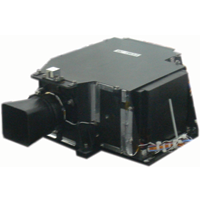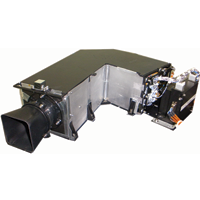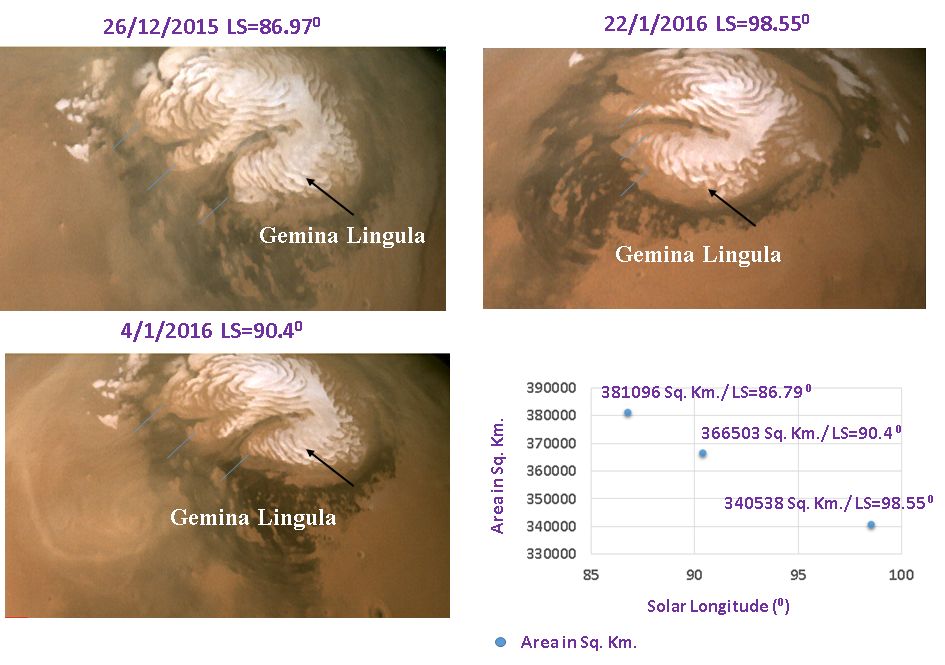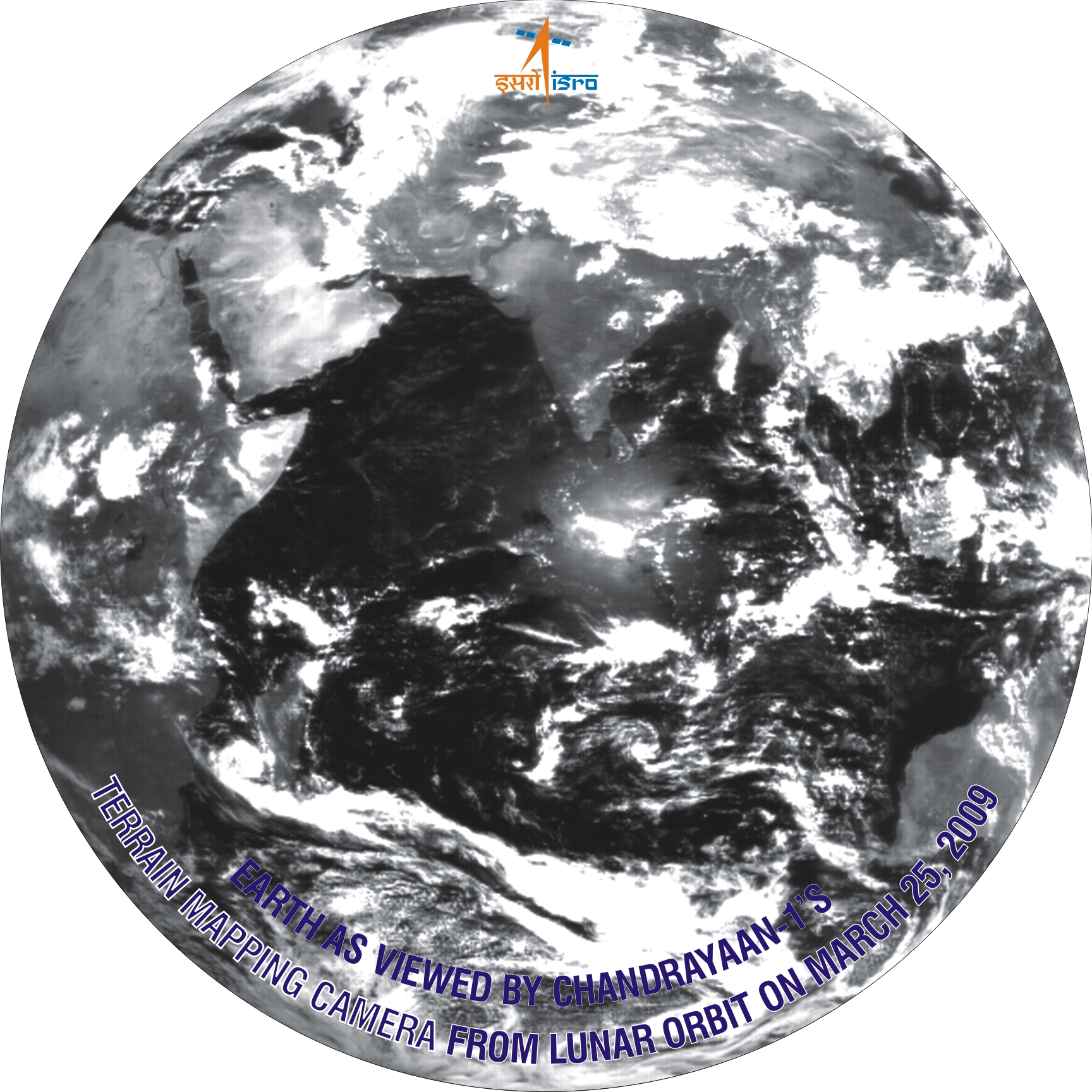Exploratory Sciences
The Indian Space Programme has the primary goal of promoting and establishing a vibrant space science, applications and technology programme to assist in the overall development of the nation.
The first Indian satellite, Aryabhata, launched in 1975, carried scientific experiments to investigate X-ray astronomy, solar neutrons and supra-thermal electron density. Since then, several instruments for scientific research have been flown on board high altitude balloons, sounding rockets and satellites. Several ground based facilities have also been set up for conducting research by scientists from universities and research institutions as part of astrophysical, solar and atmospheric research programmes.
Technologies developed for those spacecraft systems, which are readily available now at ISRO, can be fully exploited for embarking on planetary missions with well thought out scientific objectives.



Thermal Infrared Imaging Spectrometer (TIS)
TIS measure the thermal emission and can be operated during both day and night. Temperature and emissivity are the two basic physical parameters estimated from thermal emission measurement. Many minerals and soil types have characteristic spectra in TIR region. TIS can map surface composition and mineralogy of Mars.
Monitoring of Northern Polar Ice Cap by Mars Colour Camera onboard Mars Orbiter Mission
Mars Colour Camera (MCC) onboard Mars Orbiter Mission is in a unique eccentric & elliptical orbit around Mars, which helps it to image Mars & its Moons differently as compared to other international missions. The North polar ice cap (NPIC) of Mars was imaged by MCC between Solar Longitude ' (LS) 86.970 to Solar Longitude (LS) 98.550), during northern summer season on Mars. Three images were taken by MCC between 26/12/2015 & 22/01/2016 during which the altitude of MOM, from Mars, was varying from 57169 km to 71217 km.
The sublimation of polar ice was in progress and the changes in the areal extent of polar ice cap during the said period has been very accurately captured by MCC. The area of polar ice cap is estimated to have reduced from 381096 sq.km. to 340538 sq. km. (10.5%) in 12 LS (from 86.970 to 98.550) It suggests an approximate rate of 3380 sq. km. per LS observed during the period of observation. The graph shows progressive reduction in areal extent of NPIC vis.a.vis the solar longitudes. The monitoring of Martian Polar Ice Cap by MCC is well facilitated by multi-temporal images of MCC taken from apoapsis. Continuation of monitoring of the Ice caps in future can lead to significant and vital scientific information .
 Images from MCC instrument onboard MOM, depicts views of the northern polar region of Mars on different Solar longitude.
Images from MCC instrument onboard MOM, depicts views of the northern polar region of Mars on different Solar longitude.
Chandrayaan-1
Chandrayaan-1, India's first mission to Moon, was launched successfully on October 22, 2008 from SDSC SHAR, Sriharikota.
Chandrayaan-1 has indigenously developed four core payload/experiments: TMC, HySI, LLRI and HEX and a Moon Impact Probe (MIP).
Foreign Payloads
Provided below is the summary of the prime objectives of the eleven payloads carried onboard Chandrayaan-1 mission.



Chandrayaan-2
Chandrayaan-2 will be an advanced version of the previous Chandrayaan-1 mission to Moon.Chandrayaan-2 is configured as a two module system comprising of an Orbiter Craft module (OC) and a Lander Craft module (LC) carrying the Rover developed by ISRO.
The primary objective of the mission is to expand the technologies inherited from Chandrayaan-1 spacecraft and 'Develop & Demonstrate' newer technologies for future planetary missions and to design, realize and deploy a Lunar Lander-Rover capable of soft landing on a specified lunar site and deploy a Rover to carry out in-situ analysis of chemicals.
The Orbiter Craft weighing around 3200 kg would orbit around the moon and perform the objectives of remote sensing the moon. The orbiter craft carries payloads like
The Lander Craft with four scientific payloads viz
It would soft land on the lunar surface at a predetermined location on the lunar surface.
Rover also carries two instruments viz LASER Induced Breakdown Spectroscope (LIBS) and Alpha Particle X-ray Spectrometer (APIXS) to carry out in-situ analysis of chemicals. Spacecraft is being re-configured in view of the indigenous Lander and Rover.
The first Indian satellite, Aryabhata, launched in 1975, carried scientific experiments to investigate X-ray astronomy, solar neutrons and supra-thermal electron density. Since then, several instruments for scientific research have been flown on board high altitude balloons, sounding rockets and satellites. Several ground based facilities have also been set up for conducting research by scientists from universities and research institutions as part of astrophysical, solar and atmospheric research programmes.
Technologies developed for those spacecraft systems, which are readily available now at ISRO, can be fully exploited for embarking on planetary missions with well thought out scientific objectives.
Mars Orbiter Mission
Mars Orbiter Mission is ISRO's first interplanetary mission to planet Mars with an orbiter craft designed to orbit Mars in an elliptical orbit. The primary driving technological objective of the mission is to design and realize a spacecraft with a capability to perform Earth Bound Manoeuvre (EBM), Martian Transfer Trajectory (MTT) and Mars Orbit Insertion (MOI) phases and the related deep space mission planning and communication management at a distance of nearly 400 million Km. Following are the payloads developed by SAC and flown.
Mars Orbiter Mission is ISRO's first interplanetary mission to planet Mars with an orbiter craft designed to orbit Mars in an elliptical orbit. The primary driving technological objective of the mission is to design and realize a spacecraft with a capability to perform Earth Bound Manoeuvre (EBM), Martian Transfer Trajectory (MTT) and Mars Orbit Insertion (MOI) phases and the related deep space mission planning and communication management at a distance of nearly 400 million Km. Following are the payloads developed by SAC and flown.

Methane Sensor for Mars (MSM)
MSM is designed to measure Methane (CH4) in the Martian atmosphere with PPB accuracy and map its sources. Data is acquired only over illuminated scene as the sensor measures reflected solar radiation. Methane concentration in the Martian atmosphere undergoes spatial and temporal variations. Hence global data is collected during every orbit.
MSM is designed to measure Methane (CH4) in the Martian atmosphere with PPB accuracy and map its sources. Data is acquired only over illuminated scene as the sensor measures reflected solar radiation. Methane concentration in the Martian atmosphere undergoes spatial and temporal variations. Hence global data is collected during every orbit.
Mars Color Camera (MCC)
This tri-color Mars Color camera gives images & information about the surface features and composition of Martian surface. They are useful to monitor the dynamic events and weather of Mars. MCC will also be used for probing the two satellites of Mars ' Phobos & Deimos. It also provides the context information for other science payloads.
This tri-color Mars Color camera gives images & information about the surface features and composition of Martian surface. They are useful to monitor the dynamic events and weather of Mars. MCC will also be used for probing the two satellites of Mars ' Phobos & Deimos. It also provides the context information for other science payloads.


Thermal Infrared Imaging Spectrometer (TIS)
TIS measure the thermal emission and can be operated during both day and night. Temperature and emissivity are the two basic physical parameters estimated from thermal emission measurement. Many minerals and soil types have characteristic spectra in TIR region. TIS can map surface composition and mineralogy of Mars.
| The Mangalyaan Juggernaut | |
|---|---|
| Nov 5,2013 | ISRO's PSLV C25 launches Mars Orbiter Mission from Sriharikota, Andhra Pradesh |
| Nov 7-9, 2013 | Siz Earth-bound manoevres performed |
| Dec 1,2013 | Orbiter leaves Earth's orbit, trans-Mars injection performed |
| Dec 4,2013 | MOM leaves Earth's sphere of influence |
| Dec 11,2013 | First course correction manoeuvre performed |
| Jun 11,2014 | Second course correction manoeuvre exceuted |
| Sept 22,2014 | Orbiter enters Red Planet's gravitional sphere of influence, key engine test fired, last trajectory correction manoeuvre performed |
| Sept 24,2014 | Orbiter reaches intended orbit, making India first country to have successfully launched its mission at the first attempt |
| Sept 28,2014 | Orbiter captures a picture of the regional dust-storm over Red Planet's northern hemisphere from an altitude of 74500 km. |
MOM Results
Monitoring of Northern Polar Ice Cap by Mars Colour Camera onboard Mars Orbiter Mission
Mars Colour Camera (MCC) onboard Mars Orbiter Mission is in a unique eccentric & elliptical orbit around Mars, which helps it to image Mars & its Moons differently as compared to other international missions. The North polar ice cap (NPIC) of Mars was imaged by MCC between Solar Longitude ' (LS) 86.970 to Solar Longitude (LS) 98.550), during northern summer season on Mars. Three images were taken by MCC between 26/12/2015 & 22/01/2016 during which the altitude of MOM, from Mars, was varying from 57169 km to 71217 km.
The sublimation of polar ice was in progress and the changes in the areal extent of polar ice cap during the said period has been very accurately captured by MCC. The area of polar ice cap is estimated to have reduced from 381096 sq.km. to 340538 sq. km. (10.5%) in 12 LS (from 86.970 to 98.550) It suggests an approximate rate of 3380 sq. km. per LS observed during the period of observation. The graph shows progressive reduction in areal extent of NPIC vis.a.vis the solar longitudes. The monitoring of Martian Polar Ice Cap by MCC is well facilitated by multi-temporal images of MCC taken from apoapsis. Continuation of monitoring of the Ice caps in future can lead to significant and vital scientific information .
 Images from MCC instrument onboard MOM, depicts views of the northern polar region of Mars on different Solar longitude.
Images from MCC instrument onboard MOM, depicts views of the northern polar region of Mars on different Solar longitude.
Chandrayaan-1
Chandrayaan-1, India's first mission to Moon, was launched successfully on October 22, 2008 from SDSC SHAR, Sriharikota.
Chandrayaan-1 has indigenously developed four core payload/experiments: TMC, HySI, LLRI and HEX and a Moon Impact Probe (MIP).
- Terrain Mapping stereo Camera (TMC) in the panchromatic band, having 5 m spatial resolution and 20 km swath
- Hyper Spectral Imaging camera (HySI) operating in 0.4-0.95 band with a spectral resolution of 15 nm and spatial resolution of 80 m with a swath of 20 km
- Lunar Laser Ranging Instrument (LLRI) with height resolution of less than 5 m
- High Energy X-ray spectrometer (HEX) using Cadmium-Zinc-Telluride (CdZnTe) detector in the 30-270 keV energy region with spatial resolution of 33 km
- Moon Impact Probe (MIP) as piggyback payload on the main orbiterof the Chandrayaan-1 spacecraft, which will impact on the surface of the Moon
Foreign Payloads
- Chandrayaan-1 X-ray Spectrometer (C1XS) through ESA - collaboration between Rutherford Appleton Laboratory, UK and ISRO Satellite Centre, ISRO. Part of this payload is redesigned by ISRO to suit Chandrayaan-1 scientific objectives.
- Near Infra Red spectrometer (SIR-2) from Max Plank Institute, Lindau, Germany through ESA.
- Sub keV Atom Reflecting Analyser (SARA) through ESA, collaboration between Swedish Institute of Space Physics, Sweden and Space Physics Laboratory, Vikram Sarabhai Space Centre,ISRO. The Data Processing Unit of this payload/ experiment isdesigned and developed by ISRO, while Swedish Institute of Space Physics has developed the payload sensor.
- Radiation Dose Monitor Experiment (RADOM) from Bulgarian Academy of Sciences.
- Miniature Synthetic Aperture Radar (Mini-SAR) from Applied Physics Laboratory, Johns Hopkins University and Naval Air Warfare Centre, USA through NASA.
- Moon Mineralogy Mapper (M3) from Brown University and Jet Propulsion Laboratory, USA through NASA.
Provided below is the summary of the prime objectives of the eleven payloads carried onboard Chandrayaan-1 mission.
| Prime Objectives | Payload |
|---|---|
| Chemical Mapping | C1XS, HEX |
| Mineralogical Mapping | HySI, SIR-2, M3 |
| Prime Objectives | LLRI, TMC |
| Radiation Environment | RADOM, HEX, C1XS |
| Magnetic Field Mapping | SARA |
| Volatile Transport | HEX |
| Lunar Atmospheric constituent | MIP |
Chandrayaan-1 Results



Chandrayaan-2
Chandrayaan-2 will be an advanced version of the previous Chandrayaan-1 mission to Moon.Chandrayaan-2 is configured as a two module system comprising of an Orbiter Craft module (OC) and a Lander Craft module (LC) carrying the Rover developed by ISRO.
The primary objective of the mission is to expand the technologies inherited from Chandrayaan-1 spacecraft and 'Develop & Demonstrate' newer technologies for future planetary missions and to design, realize and deploy a Lunar Lander-Rover capable of soft landing on a specified lunar site and deploy a Rover to carry out in-situ analysis of chemicals.
The Orbiter Craft weighing around 3200 kg would orbit around the moon and perform the objectives of remote sensing the moon. The orbiter craft carries payloads like
- Solar X-ray monitor (XSM)
- L and S band Synthetic Aperture Radar (SAR)
- Imaging IR Spectrometer (IIRS)
- Chandra's Atmospheric Composition Explorer (ChACE-2)
- Terrain Mapping Camera-2 (TMC-2) and Chandrayaan-2 Large area soft x-ray spectrometer (CLASS)
The Lander Craft with four scientific payloads viz
- MEMS based Seismometer
- Radio Anatomy of Moon Bound Hypersensitive ionosphere and Atmosphere (RAMBHA)
- Lunar Electrostatic and Dust Levitation Experiment (LESDLE) and Chandra's Surface Thermal Experiment (ChaSTE)
It would soft land on the lunar surface at a predetermined location on the lunar surface.
Rover also carries two instruments viz LASER Induced Breakdown Spectroscope (LIBS) and Alpha Particle X-ray Spectrometer (APIXS) to carry out in-situ analysis of chemicals. Spacecraft is being re-configured in view of the indigenous Lander and Rover.




